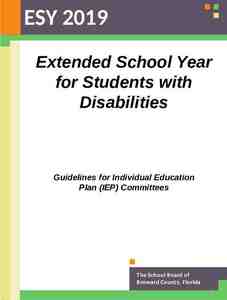Associate Level Program Development Tuesday, June 5, 2012 15th Annual
60 Slides1.24 MB
Associate Level Program Development Tuesday, June 5, 2012 15th Annual Emergency Management Higher Education Conference EMI - Emmitsburg, MD June 4-7, 2012 Moderator: Clinton J. Andersen - [email protected] Presenters: Lark Stewart Judy Jaeger Benn Prybutok Robert Aberle
Emergency Management, Homeland Security, or Other Disciplines Sustaining an Academic Program Lark Stewart Edmonds Community College
Vision Skills Incentives Resources Action Plan Profession Academia Curricula Objectives C Outcomes Q Feasibility I Funding Support Commitment ALIGNED Foundational Partnership 6/5/2012 Competencies Regulations Industry Demand Jobs / Careers Disciplines Credentialing Lark Stewart - 15th Annual EMHE Conference
Lacking clarity or consensus on the vision results in: Confusion 6/5/2012 Lark Stewart - 15th Annual EMHE Conference
When individuals lack the skills [KSA] to get the job done the result is: Anxiety 6/5/2012 Lark Stewart - 15th Annual EMHE Conference
Both intrinsic and extrinsic motivation is critical, if there are no incentives the result is: Gradual Change 6/5/2012 Lark Stewart - 15th Annual EMHE Conference
Providing the right resources at the right time can accelerate the capabilities of program, or it canFrustration cause inevitable: 6/5/2012 Lark Stewart - 15th Annual EMHE Conference
The Links of Organizational Effectiveness Lark Stewart - 15th Annual EMHE Conference 6/5/2012
Contact Information: (425) 640-1877 [email protected] Edmonds Community College 20000 68th Avenue West Lynnwood, WA 98036 http://www.edcc.edu/emergency Edmonds Community College Director, Emergency Management Program Previously a DHS/FEMA Employee & Reservist FEMA contract instructor for L363: Multi-hazard Emergency Planning for Higher Education Thank you for your participation! 6/5/2012 Lark Stewart - 15th Annual EMHE Conference
Curriculum Development Judy D. Jaeger Program Chair/ Instructor Central Georgia Technical College
In the beginning . Two agencies agree to work together Agency reps develop a Plan The “ideal” Emergency Manager needs what knowledge, skills and abilities? Georgia technical colleges already offer which courses? Which courses are already part of the PDS? Which courses need to be developed?
The “ideal” Emergency Manager Can write and develop an EOP Can develop an Exercise Program Can create and follow a budget Can work with a variety of personalities Understands local, state, and federal government requirements Can provide a persuasive argument for his/ her cause etc.
Technical College System of Georgia Already has state standards for – English – Math – Humanities – Economics – Psychology – Public Speaking – Intro to Computers, various Management courses
Federal Emergency Management Agency Already teaches courses in the Professional Development Series, such as – Principles of Emergency Management – Emergency Planning – Exercise Design & Evaluation – Haz Mat Contingency Planning – Effective Communication
Georgia Emergency Management Agency GEMA agreed to develop the following additional courses: – Mass Fatalities Incident Response – Infection Control – Facility Security – Haz Mat Awareness – Developing Community Resources – Modular Emergency Response Radiological Transportation Training (MERRTT)
The Evolution . Over time, all courses were developed; all are offered online; most are offered in the classroom Textbooks have been researched; Audio visual materials have been purchased; Online courses have been offered from the very beginning .
Creating a Successful Program
Finding Students . Normally, twelve students in attendance allows a course to “make.” Four unique factors led to the eventual success of our college’s EM program .
Factor #1: CGTC first offered three online classes, FREE OF CHARGE, using State Employees as adjunct instructors. (Not a great plan.) CGTC quickly hired a fulltime instructor, thus, the Instructor was able (and willing) to teach very small classes of five students. Over time, the numbers grew because of factors 2-4
Factor #2: CGTC already had a well-established Criminal Justice Program. The CRJ Program Chair allows two to four “electives” in his program, so he began sending students to take EM courses. (Some stayed!)
Factor #3: Two of the EM courses were offered as college-wide electives (Effective Communication and Infection Control) This brought Allied Health students, Early Childhood Education students, and several other disciplines into EM classes. (Some stayed!)
Factor #4: When folks were looking for Emergency Management courses to take, they found us at FEMA’s Higher Education website! (Thank you, FEMA!) CGTC has had students from Washington State, Iowa, Texas, Indiana, California, as well as members of our military who are serving overseas
One last note We did not attempt to run a cohort program. Other colleges in Georgia who attempted this eventually closed their programs.
Questions? Judy D. Jaeger Central Georgia Technical College 3300 Macon Tech Drive Macon, GA 31206 (478) 757-5289 [email protected]
Montgomery County Community College’s Emergency Management &Planning (EMP) AAS Montgomery County Community College’s Emergency Management & Planning (“EMP”) AAS Degree Program Benn Prybutok, MA, EJD Director, Criminal Justice Studies, Fire Science, & Emergency Management Montgomery County Community College Blue Bell, PA [email protected]
Montgomery County Community College’s Emergency Management &Planning (EMP) AAS Career Preparation – The EMP AAS degree stresses the overarching administrative, managerial, planning, and leadership skills necessary to facilitate intergovernmental and inter-agency cooperation and coordination, along with developing a firm understanding of tactical response theory and practice. The Program emphasizes an understanding of government, public agencies, and public policy management, as well as private sector needs and capabilities.
Montgomery County Community College’s Emergency Management &Planning (EMP) AAS Workforce Needs – HPO designation under Pennsylvania’s Act 46 reflecting recognition of public and private needs for “Emergency Management Specialists” (CIP 43.0112; SOC 13-1061). U.S. News & World Report listed Emergency Management as “ one of the 50 best careers of 2010 [which] should have strong growth over the next decade.” December 28, 2009 A projected need for Emergency Management Specialists is included in current data published by the Pennsylvania Department of Labor & Industry reflecting moderate to strong growth expected over the next decade.
Montgomery County Community College’s Emergency Management &Planning (EMP) AAS Top-Flight Advisory Committee – Thomas M. Sullivan, Chair, Director, Montgomery County Department of Public Safety Walter Kenney, Eastern Center for Arts & Technology Tom Garrity, Vice Chair, Deputy Director of Public Safety & Manager, Montgomery County Fire Academy; also Coordinator of Holy Family University BS transfer program Richard M. Lesniak, Director, Department of Fire Services Montgomery Township Regina S. “Gina” Bradley, MS, EMT-P, Chief of Operations, Springfield Ambulance Association Robert C. Drennen, Director of Emergency Services, Upper Moreland Twp. Jim Gallagher, King of Prussia Fire Department Brian S. Gwiazdzinski, Director of Fire Protection, Merck & Company Joseph W. O'Neill, Fire Marshal, Cheltenham Township Jeffrey M. Quinn, Director of Risk Management, AlliedBarton Security Services John Remillard, Battalion Chief, Norristown Fire Department Ken Schauder, President, Montgomery County Ambulance Association Edward J. Wurster, III, MS, CHSP, Training & Exercise Coordinator, Delaware Valley Regional Terrorism Task Force
Montgomery County Community College’s Emergency Management &Planning (EMP) AAS Top-Flight Faculty – Regina S. “Gina” Bradley, MS, EMT-P, Chief of Operations, Springfield Ambulance Association, M.A. in Public Safety, St. Joseph’s University Kimberly Kirschner, Assistant Director of Emergency Services, Cheltenham Township, MS in Public Health, West Chester University; M.S. in Em. Mgmt., Millersville University; Ph.D.(ABD) in Emergency Management, North Dakota State University David Brown, Deputy Director, Montgomery County Department of Public Safety & EMS, M.A., University of Scranton Kristopher Mattson, CEM, Montgomery County Department of Public Safety, Exercise Coordinator. M.A., Fairleigh Dickinson University Sean Petty, Deputy Director, Montgomery County Department of Public Safety, MS-EE, MS-Applied Statistics, BS-EE, Villanova University Scott Mickalonis, Deputy Director, Montgomery County Department of Public Safety, CEM, MA in Public Safety, St. Joseph’s University
Montgomery County Community College’s Emergency Management &Planning (EMP) AAS Restated & Streamlined Program Learning Outcomes – A graduate of the program will be able to: 1. Explain the difference between “emergency planning” and “emergency management;” 2. Describe the regulatory and intergovernmental framework of emergency management and planning. 3. Perform a variety of different roles and employ teamwork, team-building, and leadership skills in the context of incident management and planning exercises. 4. Explain how planning affects and facilitates preparedness. 5. Design an interactive planning process for companies and municipalities. 6. Explain and differentiate between the principles of “Incident Command” and “Unified Command”. 7. Identify, evaluate, and respond to a range of specific hazardous conditions and scenarios in both individual and group exercises. 8. Design a site safety plan. 9. Apply “all-hazards” planning methodology in preparing for mass casualty events, including acts of terrorism.
Montgomery County Community College’s Emergency Management &Planning (EMP) AAS Informed by FEMA - EMI Competencies for Undergraduate Programs in Emergency Management – An individual with an undergraduate degree should be able to demonstrate knowledge, skills and abilities in all of the following areas: FOUNDATIONAL TENETS CORE AREAS Historical awareness Principles of Emergency Management Effective communications Human dimensions Leadership, management and decision making Policy and legal dimensions Personal, organizational, and professional development Areas of emergency management responsibilities Risk assessment process and methodology SUPPORTING AREAS Awareness and Promotion of EM Public administration and community planning and development EM standards, best practices and comparative practices Public, private and nongovernmental organization networking Current and emerging technologies
Montgomery County Community College’s Emergency Management &Planning (EMP) AAS Curricular Analysis First Semester ENG 101 English Composition-I .3 Math course that meets Goal #3 3 FSC 100 Introduction to Fire Science .3 EMP 100 Emergency Planning 3 POL 124 American National Government 3 (15 credit hours) Third Semester HIS 102 History of Western Civilization 3 FSC 102 Hazardous Materials .3 EMP 120 Search & Rescue .3 ANT 104 Intro to Cultural Anthropology .3 CJS 250 Terrorism & Counterterrorism. .3 Elective to meet Goal #7. .3 (18 credit hours) Second Semester ENG 102 English Composition-II 3 Elective to meet Goal #8 .3-4 EMP 110 Incident Management .3 FSC 103 Fire Dept Org & Mgmt. OR CJS 270 Police Dept Org & Admin .3 POL 125 State & Local Government OR POL 231 Public Policy Management .3 (15-16 credit hours) Fourth Semester EMP 210 Leadershp & Influence in Em Resp 3 EMP 200 Seminar in Em Management 1 CIS 110 Computer Info Systems for Mgmt 3 EMP 265 Public Safety Technology .3 SPC 110 Intro to Speech Communication .3 ESW 245 Safety and First Aid .3 (16 credit hours) TOTAL SEMESTER CREDIT HOURS : 64-65
Montgomery County Community College’s Emergency Management &Planning (EMP) AAS Concentration in Homeland Security –
Montgomery County Community College’s Emergency Management &Planning (EMP) AAS EMP Program Review Analysis & Recommendations – Curricular review – EMP curriculum remains consistent with the curricular initiatives of the Federal Emergency Management Agency (FEMA) and its Emergency Management Institute (EMI). Curriculum continues to reflect current FEMA doctrine and has been extensively vetted by our own County Department of Public Safety. Significant findings – EMP program continues to serve well a limited but important constituency within the County and region. More than half of our EMP majors are nontraditional students, and more than half are part-time. A large majority of our EMP majors are already “in-service” personnel. A significant number are employed in the private sector with area companies including Lockheed-Martin, Boeing, and Merck. The program needs to achieve a more regular growth pattern. Although it is likely to remain relatively small, management believes that gains can be realized by more regularized and more frequent advertising through existing County channels.
Montgomery County Community College’s Emergency Management &Planning (EMP) AAS Significant findings of our 1st Five-Year APR – For the Spring 2011 term there were 18 declared Emergency Management and Planning majors enrolled at the College, 3 on a full-time basis, and 15 on a part-time basis. Analysis of the Emergency Management and Planning Program by age reflects 38.89% of declared EMP majors as “traditional” students, and 61.11% as “non-traditional” students. Analysis of the Emergency Management and Planning Program by gender reflects 44.44% Female, and 55.56% Male. There were a total of 4 Emergency Management and Planning degrees conferred during the 2010-2011 academic year.
Montgomery County Community College’s Emergency Management &Planning (EMP) AAS Analysis & Recommendations – Additional recommendations -- The Dean, Director, Advisory Committee, and faculty also recommend the following: Increase program enrollment by 50% by Spring 2015. Increase graduation rate to 20% by Spring 2015. Improve tracking of employment status of EMP majors and graduates. Add a representative from the K-12 sector, presumably an educator or administrator from one of our ‘tech-prep’ high school partners, to the Fire Science & Emergency Management Advisory Committee. Develop and implement the ‘Certificate of Completion’ in Homeland Security.
Montgomery County Community College’s Emergency Management &Planning (EMP) AAS
Montgomery County Community College’s Emergency Management &Planning (EMP) AAS
Montgomery County Community College’s Emergency Management &Planning (EMP) AAS
Montgomery County Community College’s Emergency Management &Planning (EMP) AAS Questions? Contact information: Benn Prybutok, MA, EJD Director, Criminal Justice Studies, Fire Science, & Emergency Management Montgomery County Community College 340 Dekalb Pike, #240 Parkhouse Hall Blue Bell, PA 19422 Phone: 215 641-6428 Email: [email protected]
Emergency Management/Homeland Security Administration College of Southern Nevada Curriculum Development and Student Recruitment By: Robert Aberle
COLLEGE OF SOUTHERN NEVADA
The College of Southern Nevada 3 main campuses Las Vegas Henderson North Las Vegas 8 satellite centers 44,088 students (2010) 501 full-time faculty 911 part-time faculty
Degrees and Certificates 1 Bachelor of Science, Dental Hygiene 27 Associate of Arts Degrees (AA) 82 Associate of Applied Science Degrees (AAS) 10 Associate of Science Degrees (AS) 1 Associate of Business Degree (AB) 1 Associate of General Studies Degree (AGS) 76 Certificates of Achievement (CA)
Department of Public Safety & Human Services Criminal Justice 2,646 students Emergency Management/Homeland Security Administration 116 students Human Services 216 students Military Science (ROTC) 15 students
CURRICULUM DEVELOPMENT
Emergency Management Administration Program started in 2005 as an AA Degree in Emergency Management Administration There have been no changes made in the curriculum since the inception until now The curriculum currently consists of 32 credits of general education requirements and 32 credits of program requirements There were are no electives offered
Emergency Management Administration SPECIAL PROGRAM REQUIREMENTS (32 Credits): Credits EMA 101 Principles of Emergency Management 3 EMA 102 Emergency Planning 3 EMA 120 Emergency Operations Centers 3 EMA 130 Role and Scope of the Public Information Officer 3 EMA 140 Disaster Response and Recovery 3 EMA 210 Disaster Mitigation 3 EMA 220 Emergency Simulations and Exercises 3 EMA 230 Incident Command System National Curriculum 4 EMA 240 Web-Based Emergency Management Simulation Exercise 4 EMA 250 Terrorism Response Planning 3
Emergency Management Administration Timeline: Fall 2005 EMA courses and degree offered for the first time with 1 adjunct faculty Spring 2010 Added second adjunct faculty Spring 2011 First TSA course offered Fall 2011 Second TSA course offered DECISION TIME – deactivate or improve Set up advisory board to revamp curriculum Added third adjunct faculty Spring 2012 Third TSA course offered Hired four additional adjunct instructors New curriculum approved with program name change First EMA graduates Fall 2012 First courses will be offered from new curriculum
Emergency Management/Homeland Security Administration Advisory Board Made up of 8 participants Educators EMA practitioners Education Medical Fire department Federal government
Emergency Management/Homeland Security Administration Advisory Board Suggestions/Accomplishments Change program name From Emergency Management Administration to Emergency Management/Homeland Security Administration Combine and deactivate courses Re-write degree program and course descriptions Add six new courses Reduce degree requirements from 62 to 60 credits Add 15 Credits of electives including an internship
Emergency Management/Homeland Security Administration Additional Changes Added all three TSA courses as a part of the degree program 1. Introduction to Homeland Security 2. Transportation and Border Security 3. Intelligence Analysis and Security Management Allowed for a choice of prerequisites 1. Introduction to Emergency Management OR 2. Introduction to Homeland Security Added CRJ-104 Administration of Justice as an elective
Emergency Management/Homeland Security Administration Emergency Management/Homeland Security Administration Special Program Requirements (30 Credits) CR EMA 101 Principles of Emergency Management OR EMA 103 Introduction to Homeland Security 3 EMA 102 Disaster Mitigation and Preparedness 3 EMA 120 Emergency Operations Centers 3 EMA 140 Disaster Response and Recovery 3 EMA 160 Business Continuity and Resilience 3 Plus 12 Credits from the following: EMA 101 Principles of Emergency Management 3 EMA 103 Introduction to Homeland Security CRJ 104 Introduction to the Administration of Justice 3 EMA 130 Role and Scope of the Public Information Officer 3 EMA 150 Transportation and Border Security 3 EMA 220 Emergency Simulations and Exercises 3 EMA 230 National Incident Management System National Curriculum (NIMS) 3 EMA 250 Terrorism Response Planning 3 EMA 260 Intelligence Analysis 3 EMA 290 Internship in Emergency Management 3
IMPORTANT NOTE This curriculum is a work in progress The Advisory Board will be meeting several times over then next two semesters (after implementation in Fall 2012) to re-visit all courses and continue to update and tweet the program
CLASS ENROLLMENT AND RECRUITMENT
Enrollment Fall 2005 6 students taking 1 course Spring 2012 116 students taking 12 courses* * Low class size was to allow for some current students to complete courses needed for graduation
Enrollment 140 120 100 80 60 40 20 0 # of Sections # of Students
Recruitment Efforts Little was done to promote the program from inception until Spring 2011 Starting in Spring 2011 enrollment began to increase with the addition of the first TSA course We now teach three TSA courses per semester with a total enrollment of about 40 students TSA students who have completed the 3 course sequence are being encouraged by TSA and CSN to pursue their AA Degree
Recruitment Efforts All 6 of our current adjunct faculty are practitioners in the field and are actively recruiting students The revised curriculum is being emphasized by CSN in local Go-To-College high school presentations The program will be featured on CSN broadcasts on monitors in every building on all campuses Brochures are being developed to go to high schools and business in and around the Las Vegas Valley
QUESTIONS ? Robert Aberle Professor/Department Chair Department of Public Safety & Human Services College of Southern Nevada Las Vegas, Nevada [email protected]

































































